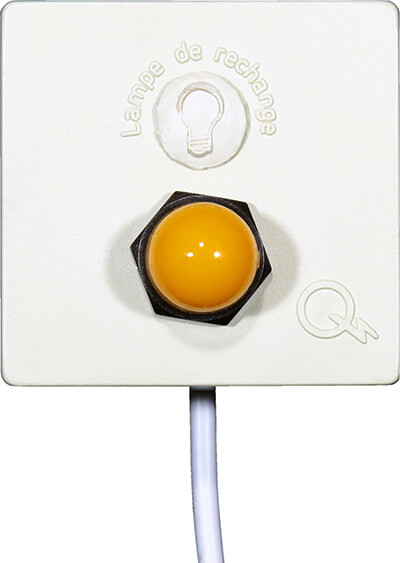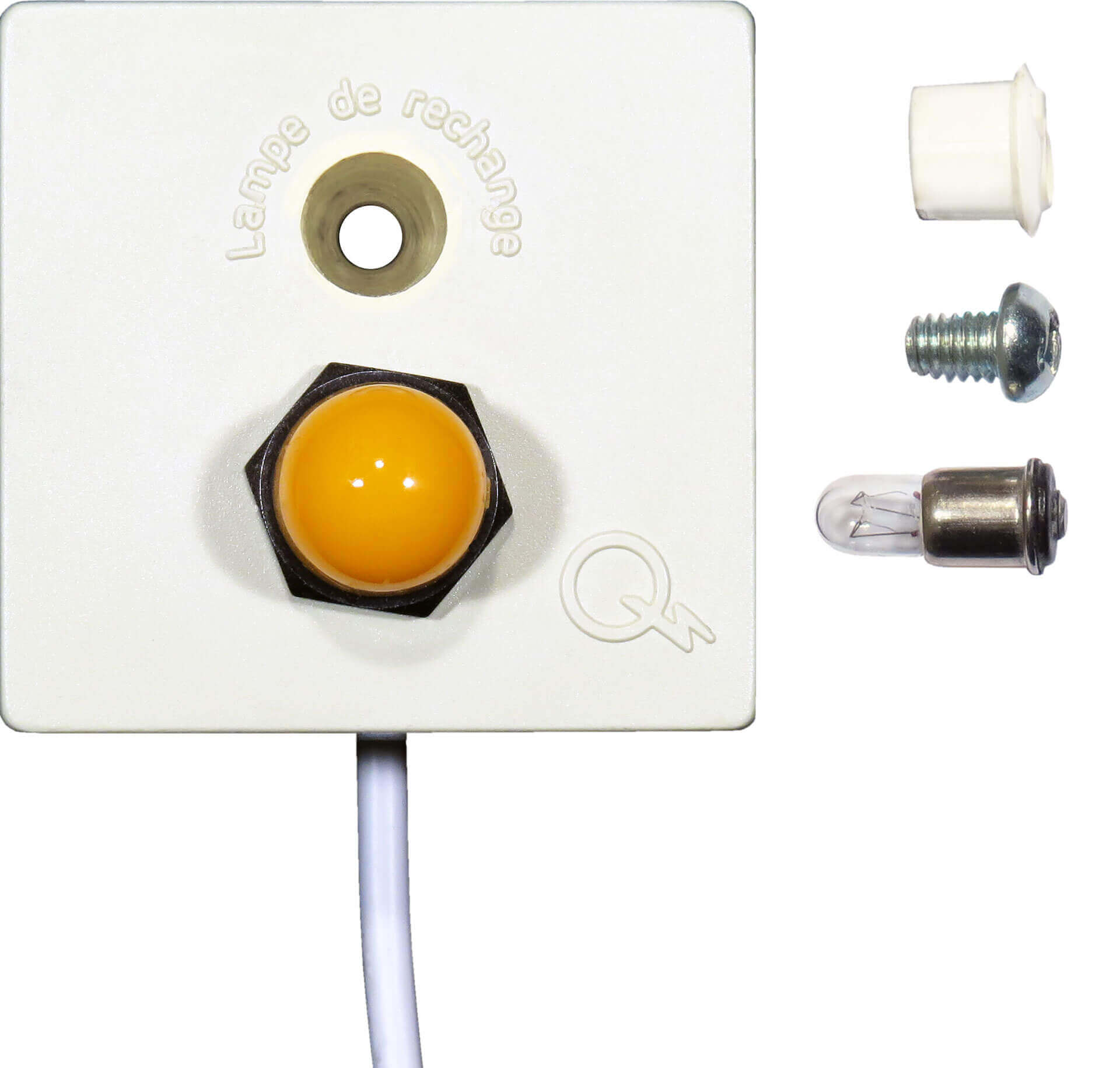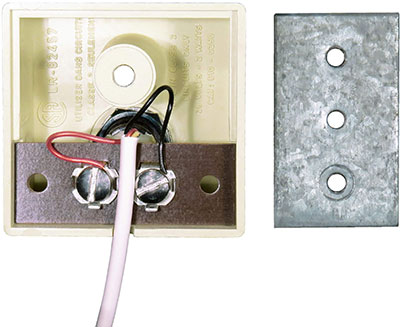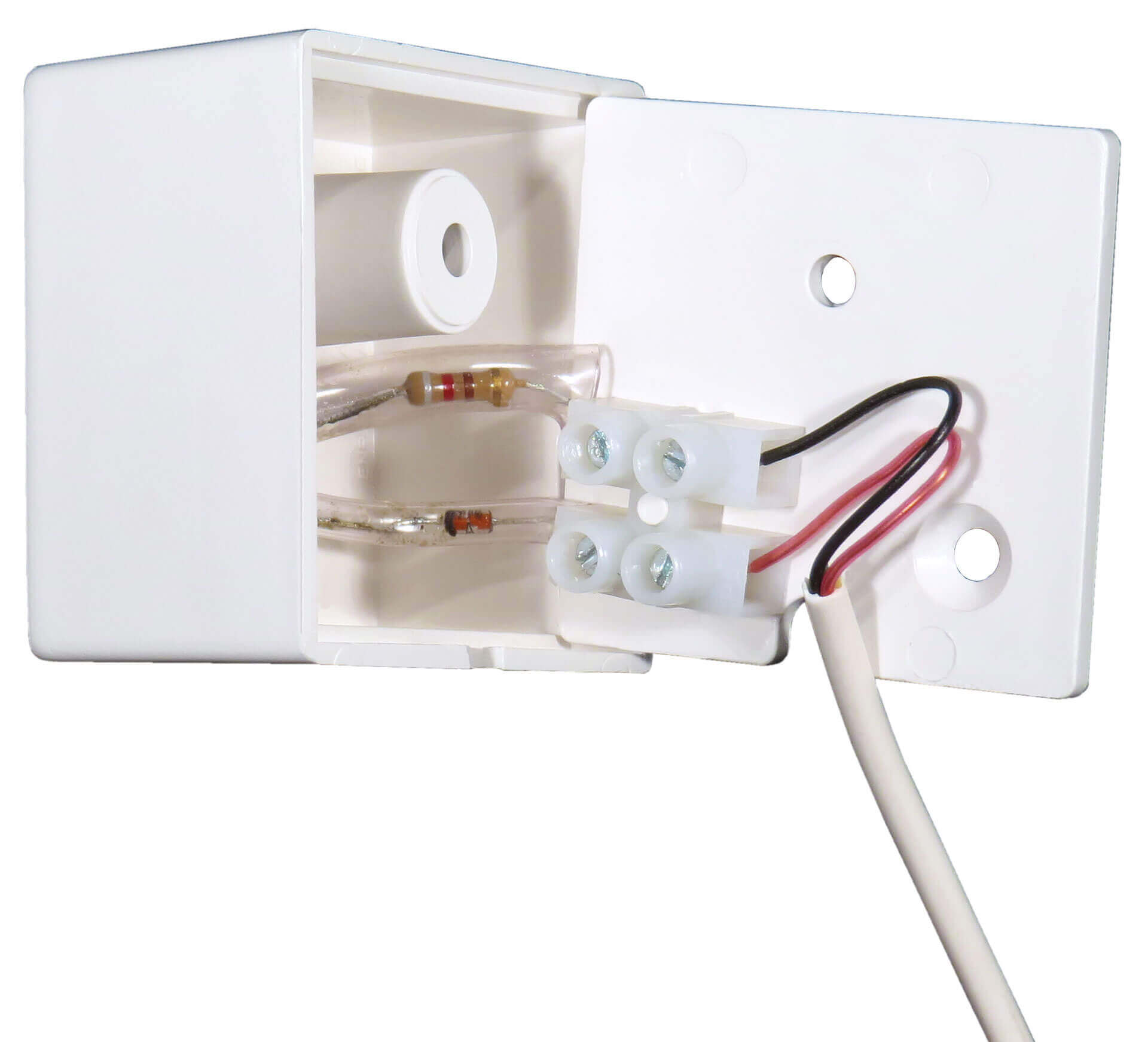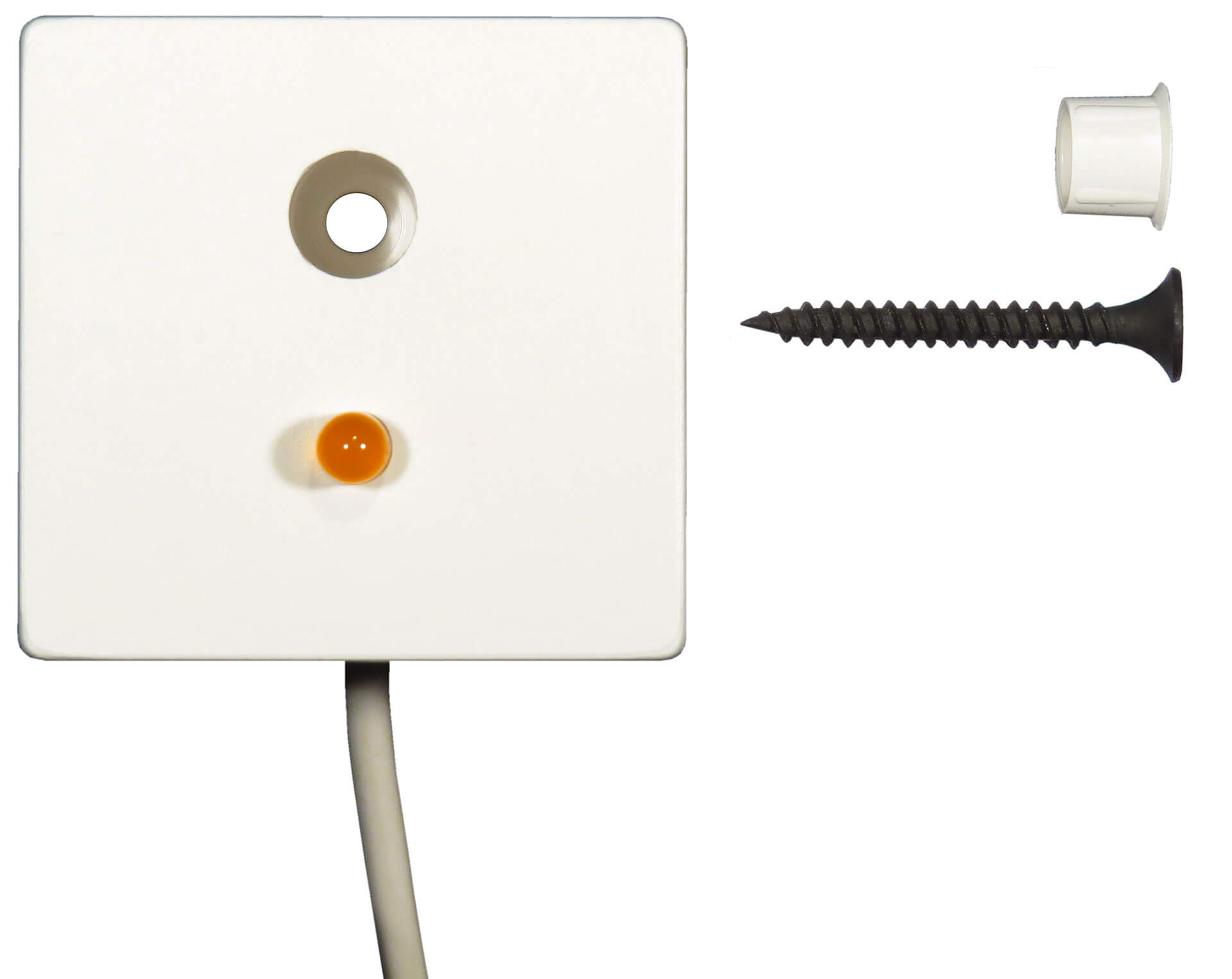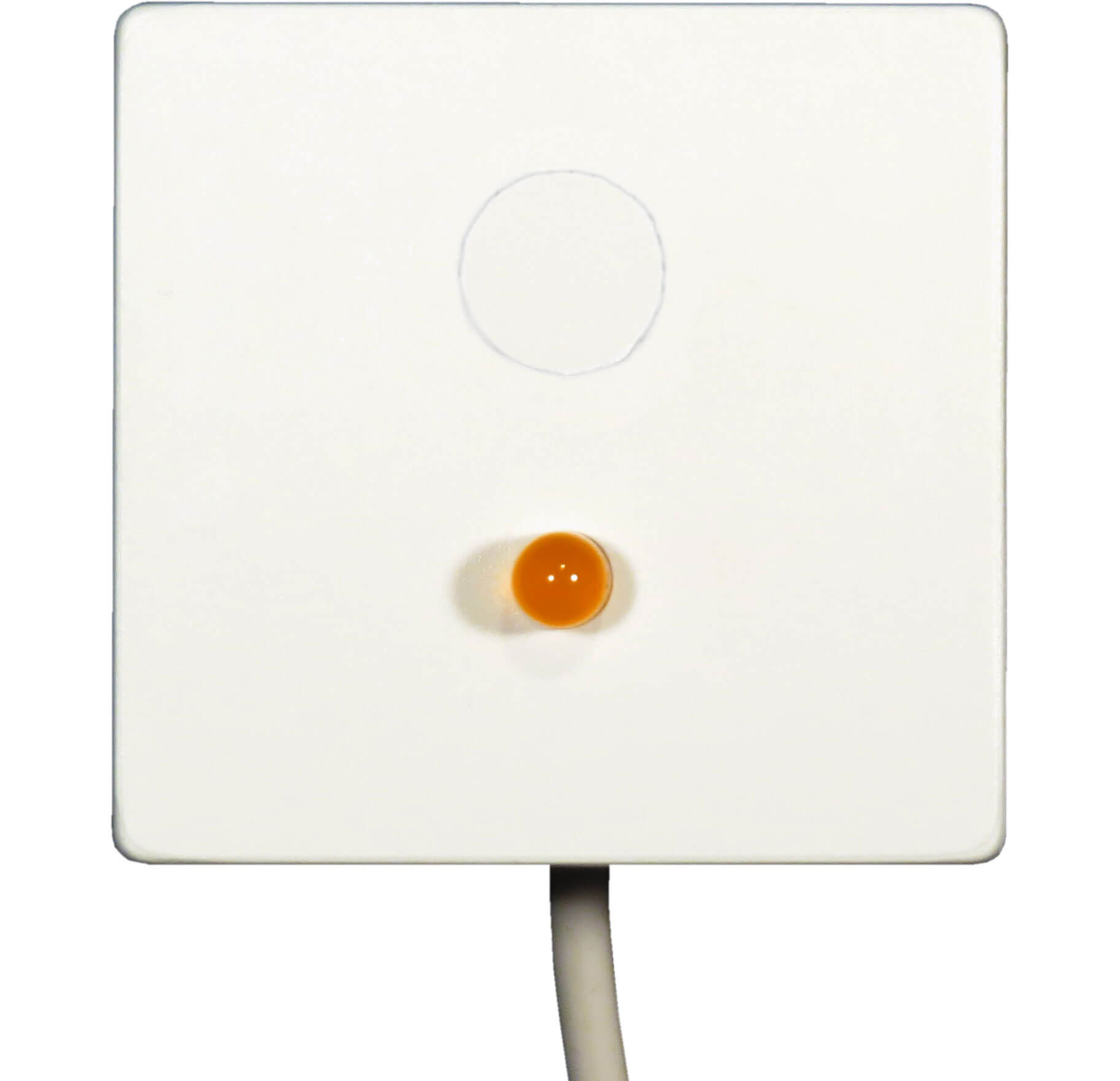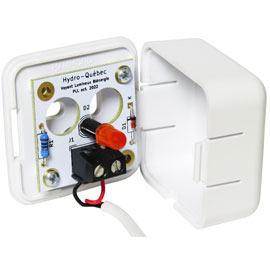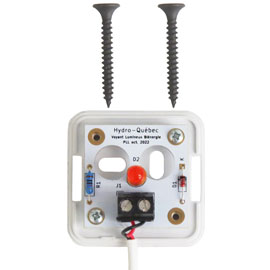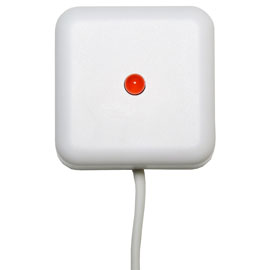Rate DT – Dual Energy
How a dual-energy system eligible for Rate DT works
For a dual-energy heating system to be eligible for Rate DT, it must automatically switch from one energy source to the other when it receives a signal from the outdoor temperature sensor, usually built into Hydro‑Québec’s meter.
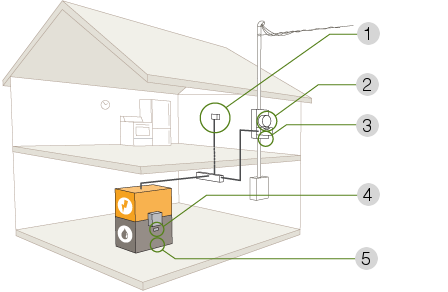
Maximize your savings by using the right source of energy
To maximize your savings under Rate DT, it is important that you use the right source of energy at the right time, based on the outdoor temperature and the price billed.
When do you use electricity and when do you use fuel?
It all depends on the oudoor temperature:
Temperature
Above or equal to –12°C or –15°C (depending on the region)
Indicator light in your home
Off
Price of electricity
Lower price: /kWh
Recommended source of energy
Heat using electricity
Temperature
Lower than –12°C or –15°C
(depending on the region)
Indicator light in your home
On
Price of electricity
Higher price: /kWh
Recommended source of energy
Heat using fuel
In addition to choosing the right energy source for your heating needs, based on the outdoor temperature and price billed, it is also important to make the best possible use of your dual-energy system and to use electricity efficiently.
If your dual-energy system is equipped with a manual switch to go from one energy source to the other (fuel or electricity), we recommend that you select the dual-energy mode at all times. That way, your system will automatically use the most economical energy source based on the outdoor temperature.
Given that all the electricity consumed during cold weather is billed at the higher price under Rate DT, it’s a good idea to use less hot water and limit your use of nonessential appliances and electronics during those periods. You’ll save more than 80% on electricity consumption that is put off until it isn’t as cold out.
Your savings under Rate DT are not as high as you expected?
Analyze your situation to identify ways that can help you start saving again with Rate DT.
Have you made changes to your heating system?
You haven’t made any changes to your dual‑energy system?
Usage and maintenance
Manual mode selection switch
Replacing the dual‑energy indicator light
Replacing your dual‑energy heating system
Features of a dual‑energy system eligible for Rate DT
More information
To find out more about Rate DT, consult Section 5 of Chapter 2 of the Electricity Rates [PDF 2.31 MB].
During most of the year
When the temperature is above or equal to −12°C or −15°C, depending on the region.
During a cold spell
When the temperature goes below −12°C or −15°C, depending on the region.
First tier
Your energy consumption is divided into two tiers. The first tier (1st tier), which is set at 40 kWh per day, or 1,200 kWh per month, is billed at a lower price than the second tier (2nd tier).
Rate
Electricity rate effective April 1, .
Oil
Estimated cost of oil: /litre.
Electricity – Rate D
Consumption billed at the first‑tier price of Rate D at April 1, , for consumption associated with central air‑conditioning, and the second‑tier energy price of Rate D for pool heating.
Dual-energy – Rate DT
Consumption billed at lowest Rate DT price, as at April 1, .
Distribution service loop
Any portion of a power line, not located along a public highway, extending the Hydro-Québec system to the connection point.
See the eligibility criteria regarding domestic rates for farms[PDF 693 Kb]
System access charge
A set amount, expressed in dollars per month or cents per day depending on the applicable rate, that the customer must pay for the electricity service.
Beginning April 1, 2019, the term fixed charge was replaced with system access charge.
Multiplier
A factor that is applied to the system access charge, to the consumption at the various energy price tiers and to the base billing demand, as applicable depending on the rate.
Energy
Power used by electrical equipment over a given period of time. Expressed in kilowatthours (kWh), energy is calculated as power, expressed in kilowatts (kW), multiplied by the time during which the power is used, expressed in hours (h).
The formula for energy is as follows: energy (in kilowatthours) is equal to power (in kilowatts) multiplied by duration of use (in hours).
Energy (kWh) = power (kW) x time used (h).
Power
Total amount of electricity supplied at a given time. Expressed in kilowatts (kW), power is the combined effect of voltage, expressed in kilovolts (kV), and current, expressed in amperes (A).

Winter period
Period from December 1 through March 31 of the next year, inclusive.
Summer period
Period from April 1 through November 30, inclusive.
Maximum power demand
Maximum power measured during a consumption period. It is the higher of the following two values: real power in kilowatts (kW), or a percentage (90% for domestic rates and small- and medium-power rates, or 95% for large-power rates) of the apparent power in kilovoltamperes (kVA).
Real power
Amount of electricity consumed in a useful manner to operate equipment, such as a motor or a heating or lighting system. Real power is expressed in kilowatts (kW).
Apparent power
Amount of electricity that Hydro-Québec supplies to a customer, expressed in kilovoltamperes (kVA). When it is used, apparent power breaks down into real power (kW), which runs devices, and reactive power (kVAR), which produces magnetic fields and which is not useful power for the customer.
Minimum billing demand (minimum demand)
The minimum amount of power that customers must pay for each consumption period, regardless of their electricity use. The threshold is set so that customers pay their share of the costs Hydro‑Québec incurs to meet their power needs at all times. The minimum billing demand is determined by the conditions of each rate, as indicated in the Electricity Rates.
- For all rates except Rate L, the minimum billing demand is automatically determined based on the previous winter’s maximum power demand.
- Rate L customers must set their own minimum billing demand, called “contract power,” based on their projected electricity use.
Electricity as the main source
The dual-energy system in electrical mode uses an electric forced-air system, an electric boiler, a traditional central heat pump or a geothermal heat pump.
Fuel as the auxiliary source
“Fuel as the auxiliary source” refers to a fuel such as natural gas, oil, propane or wood pellets that is used as a second source of energy to heat your home.
Dual-energy system in fuel mode
The dual-energy system in fuel mode must be able to keep your home warm during cold spells without the electrical mode being used at the same time.
Automatic switch
A dual-energy heating system eligible for Rate DT automatically switches from one energy source to the other when it receives a signal from the outdoor-temperature sensor: electricity when the temperature is above or equal to –12°C or –15°C, depending on the region; fuel when the temperature goes below that critical threshold.
Off-grid systems
“Off-grid system” refers to a system that is not connected to Hydro‑Québec’s main grid. In this particular case, it refers to the systems in Îles-de-la-Madeleine, Clova, Obedjiwan or Île-d’Anticosti or one of the Nunavik systems. Rate DT (dual energy) is not available to homes and farms located in those regions.
Electricity as the main source of energy
The dual-energy system in electrical mode uses an electric forced-air system, an electric boiler, a traditional central heat pump or a geothermal heat pump.
Fuel as the auxiliary source
“Fuel as the auxiliary source” refers to a fuel such as natural gas, oil, propane or wood pellets that is used as a second source of energy for your farm’s heating needs.
Dual-energy system in fuel mode
The dual-energy system in fuel mode must be able to keep the farm premises it serves warm without the electrical mode being used at the same time.
Comments:
- The installed capacity of each dual-energy system must be no less than 50% of the installed capacity of the premises it serves.
- The installed capacity of all premises that are not served by a dual-energy system must not exceed 10 kilowatts.
Off-grid systems
“Off-grid system” refers to a system that is not connected to Hydro‑Québec’s main grid. In this particular case, it refers to the systems in Îles-de-la-Madeleine, Clova, Obedjiwan or Île-d’Anticosti or one of the Nunavik systems. Rate DT (dual energy) is not available to homes and farms located in those regions.
